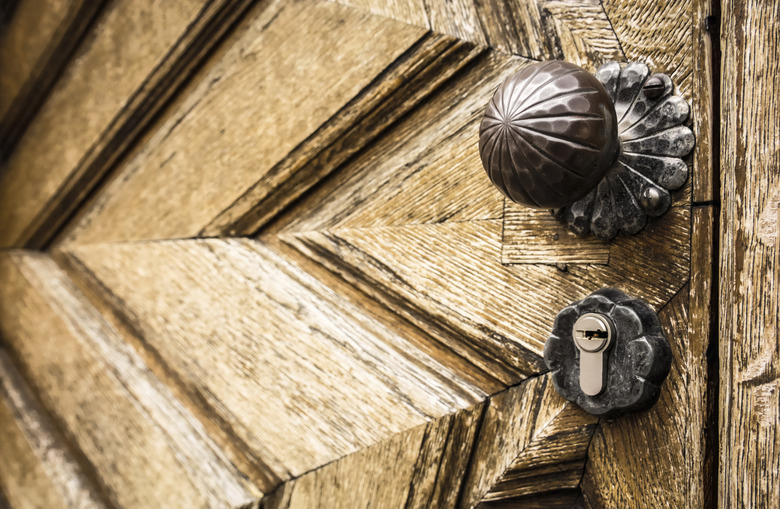How To Create An Oil-Rubbed Bronze Look
Things Needed
-
Newspaper
-
Fine-grit sandpaper
-
Soft rag
-
Painter's tape
-
Latex primer or spray primer
-
Paintbrush
-
Dust mask (optional)
-
Latex paint in espresso or dark brown color
-
Paint stirrer
-
Paint tray
-
Corrugated cardboard scrap (at least several inches wide and long)
-
Bronze latex or acrylic paint
-
Clear latex or acyrlic glaze
-
Small disposable container
-
Sea sponge
Tip
If the project piece is made from plastic or laminate, use a primer designed for such surfaces instead of a latex primer, as it will adhere better.
A balled-up plastic bag or piece of cheesecloth may be used in place of a sea sponge. Test either material on painted cardboard to get a feel for the look and technique before glazing the actual project piece.
Warning
If you choose to use a spray primer, only do so if you can work outdoors or in a well-ventilated area to avoid breathing in fumes. Move nearby objects out of the way, or put the project piece into a cardboard box to protect the surrounding area from overspray.
An oil-rubbed bronze faux finish gives just about any material an aged metal appearance — no oil or bronze required. Layering paint and tinted glaze is the key to creating the look on just about any hard surface, whether the project piece is made of metal, plastic, wood or laminate.
Step 1
Cover the project area with newspaper. Set the project piece atop the paper.
Step 2
Sand the project piece with a fine-grit sandpaper, sanding only enough to scuff up the finish. No matter what the piece is made of, sanding helps the primer and paint adhere. Wipe away any dust with a soft rag.
Step 3
Cover any areas on the project piece that you wish to keep paint-free with painter's tape.
Step 4
Coat the project with a layer of latex primer using a paintbrush. If you prefer to use a spray primer — for instance, on a small picture frame — spray the piece outdoors on a non-windy day, or in a well-ventilated area while wearing a dust mask. Spray by holding the can 12 to 18 inches away from the surface using overlapping parallel strokes. Allow the primer to dry completely. If the original finish is visible beneath the primer, apply a second coat of primer and allow it to dry as well.
Step 5
Open and stir the dark brown latex paint, pouring some into a paint tray. Coat the project piece with a layer of the paint, applying it with a paintbrush. Allow the paint to dry completely. Apply a second coat and allow it to dry as well if the primer is still visible once the first coat dries. Paint a scrap piece of cardboard with the brown paint.
Step 6
Open and stir the bronze paint. Pour some into a disposable container. Add approximately half as much latex glaze, stirring with a paint stirrer to blend them.
Step 7
Dip the corner of a sea sponge into the glaze mixture, wiping excess off on the edge of the container. Blot the tinted glaze randomly over the painted cardboard to get a feel for the technique and to determine whether the glaze translucency looks good to you. If you prefer it to be more translucent, allowing more base coat to show through, add more glaze. To make it less translucent, add a little more paint. Stir to blend them.
Step 8
Dip the sponge into the glaze and dab it all over the project piece. Brush the wet glaze with a dry, soft-bristled brush to soften the look. If working over a large area, limit your glaze application to an area several feet across at one time to ensure it stays wet while brushing. If the project looks too dark and not bronze enough, dip the sponge into the glaze again and apply more glaze. Otherwise, allow the glaze to dry completely.
